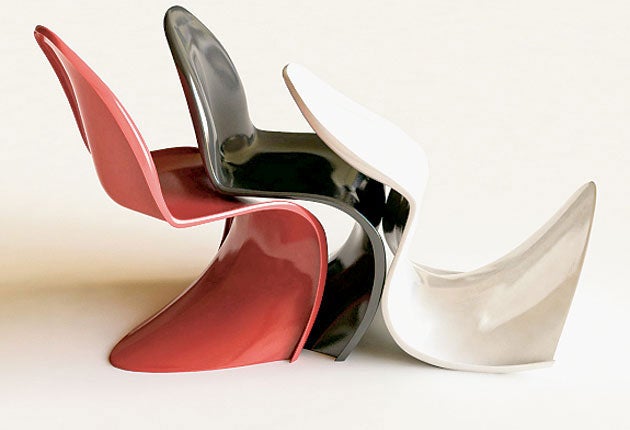The Secret History Of: The Verner Panton S Chair

Your support helps us to tell the story
From reproductive rights to climate change to Big Tech, The Independent is on the ground when the story is developing. Whether it's investigating the financials of Elon Musk's pro-Trump PAC or producing our latest documentary, 'The A Word', which shines a light on the American women fighting for reproductive rights, we know how important it is to parse out the facts from the messaging.
At such a critical moment in US history, we need reporters on the ground. Your donation allows us to keep sending journalists to speak to both sides of the story.
The Independent is trusted by Americans across the entire political spectrum. And unlike many other quality news outlets, we choose not to lock Americans out of our reporting and analysis with paywalls. We believe quality journalism should be available to everyone, paid for by those who can afford it.
Your support makes all the difference.The Panton stacking chair, or "S" chair, is officially the sexiest chair ever made. It has appeared on the cover of Vogue (well, Kate Moss was in the picture too. All right, so she was naked) and it featured in a 1970s article in which a model demonstrated how to undress in front of your husband.
The S has become such a classic piece of furniture and has been so widely copied that it's hard to understand just how revolutionary it was when it first appeared.
Its designer, Verner Panton, had the idea in 1960, on a visit to a factory making safety helmets and buckets, according to the Design Museum. But it would be several years before he could find a manufacturer who was able to mass produce it. Made from a single piece of cantilevered plastic with no back legs, it was the first of its kind.
"The design was very difficult to work on," says Joanna Moore from Vitra, the Swiss company that still holds the licence to make them. "Many manufacturers just refused to get involved with it but Vitra was willing to work with Panton to develop his idea.
"Once it had been put into production, the chair was very well received and became very popular. It's still very popular today, partly because of its organic shape and also because of its great history."
Panton was a master of the futuristic 1960s design which became known as the Pop movement. Born in Denmark, he joined the Resistance during the Second World War and spent several months in hiding after a cache of weapons was found in his bedroom.
After studying with another legend of design, Arne Jacobsen, Panton created the Cone chair in 1959. So many people gathered to see it in a New York shop window that the police ordered it be removed. He then moved on to make the first inflatable furniture and, in 1967, the S was born.
Panton fell out of fashion during the 1970s but then, in the 1990s, the S was in vogue – literally – as mid-century modern became fashionable again. He won more awards and the chair was put back into production. He was invited to design an exhibition in his honour in Copenhagen in 1998 but died 12 days before it opened.
Today Vitra produces the S in a rainbow of colours, although purists will say it looks best in white, black or red. In 2003, Vitra started making a perfectly scaled-down children's version too. "Panton came up with the children's model right at the start but it was felt that it wasn't commercially viable at the time so it was never put into production," says Moore.
The polypropylene version retails for £180.95 and the new season's colours include tangerine, ice grey and chartreuse.
Join our commenting forum
Join thought-provoking conversations, follow other Independent readers and see their replies
Comments